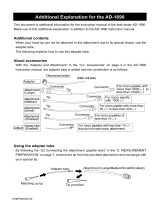
Roche Diagnostics
Multiplate® analyzer · Software version 2.06 · Quick Reference Guide · version 3.0
Multiplate – Parameters 19
Multiplate – Parameters
The Multiplate
®
analyzer continuously records platelet
aggregation. The adhesion and aggregation of platelets
onto the Multiplate sensors generate an increase in
impedance which is transformed into arbitrary
aggregation units (AU) and plotted against time.
The most important parameter is the area under the
aggregation curve (AUC). It is affected by the total height
of the aggregation curve as well as by its slope and is
best suited to express the overall platelet activity. Two
AUC units are used: U and AU*min. The first unit (U) is
the preferred one.
Two more parameters are calculated: The aggregation
(Agg) is the increase of impedance during analysis. The
velocity (Vel) is the maximum slope of the aggregation
curve.
Two curves are assessed using the two independent
sensors in the Multiplate test cell. The parameters
calculated by the software are the mean values of the
data of each curve.
Above the curve the AUC bars with reference and target
ranges are displayed. Within the AUC bars the black bars
(A) indicate the actually measured AUC result. The green
zones (B) represent the reference and the target range
that have been programmed for the test.
Press Ctrl+K or choose Switch curve mode from the
Measurements menu to toggle between the overlapped
curves (representing the duplicate measurements) or the
filled curve (reflecting the mean value of the
measurements).
Time [min]
Aggregation [AU]
Velocity [AU/min
]






















